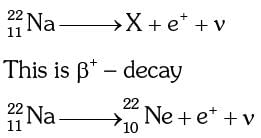Test: NEET 2022 Past Year Paper - NEET MCQ
30 Questions MCQ Test NEET Past Year Papers - Test: NEET 2022 Past Year Paper
Two hollow conducting spheres of radii R1 and R2 (R1 >>R2) have equal charges. The potential wouldbe :
The angular speed on a fly wheel moving with uniform angular acceleration changes from 1200 rpm to 3120 rpm in 16 seconds. The angular acceleration in rad/s2 is :
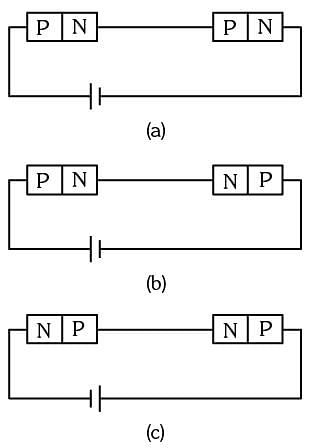
In the given circuits (a), (b) and (c), the potential drop across the two p-n junctions are equal in:

In the given circuits (a), (b) and (c), the potential drop across the two p-n junctions are equal in:
Two objects of mass 10 kg and 20 kg respectively are connected to the two ends of a rigid rod of length 10 m with negligible mass. The distance of the center of mass of the system from the 10 kg mass is:
A biconvex lens has radii of curvature, 20 cm each. if the refractive index of the material of the lens is 1.5, the power of the lens is :
A spherical ball is dropped in a long column of a highly viscous liquid. The curve in the graph shown, which represents the speed of the ball (v) as a function of time (t) is :
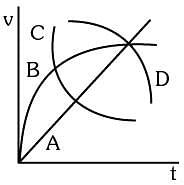
The ratio of the radius of gyration of a thin uniform disc about an axis passing through its centre and normal to its plane to the radius of gyration of the dis about its diameter is :
A shell of mass m is at rest initially. It explodes into three fragments having mass in the ratio 2 : 2 : 1. If the fragments having equal mass fly off along mutually perpendicular directions with speed v, the speed of the third (lighter) fragment is
A long solenoid of radius 1 mm has 100 turns per mm. If 1A current flows in the solenoid, the magnetic field strength at the centre of the solenoid is
Let T1 and T2 be the energy of an electron in the first and second excited states of hydrogen atom, respectively. According to the Bohr's model of an atom, the ratio T1 : T2 is :
A light ray falls on a glass surface of refractive index √3, at an angle 60°. The angle between the refracted and reflected rays would be :
If a soap bubble expands, the pressure inside the bubble:
When light propagates through a material medium of relative permittivity εr and relative permeability µr, the velocity of light, v is given by: (c-velocity of light in vacuum)
Two resistors of resistance, 100 Ω and 200 Ω are connected in parallel in an electrical circuit. The ratio of the thermal energy developed in 100 Ω to that in 200 Ω in a given time is :
The graph which shows the variation of the de Broglie wavelength (λ) of a particle and its associated momentum (p) is:
A square loop of side 1 m and resistance 1 Ω is placed in a magnetic field of 0.5 T. If the plane of loop is perpendicular to the direction of magnetic field, the magnetic flux through the loop is :
In half wave rectification, if the input frequency is 60 Hz, then the output frequency would be :
An ideal gas undergoes four different processes from the same initial state as shown in the figure below . Those processes are adiabatic, isothermal, isobaric and isochoric. The curve which represents the adiabatic process among 1,2,3 and 4 is
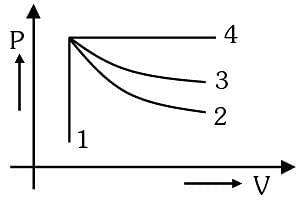
Match List – I with List –II
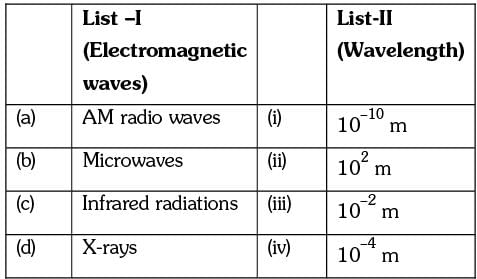
Choose the correct answer from the options given below:
The displacement-time graphs of two moving particles make angles of 30° and 45° with the x-axis as shown in the figure. The ratio of their respective velocity is
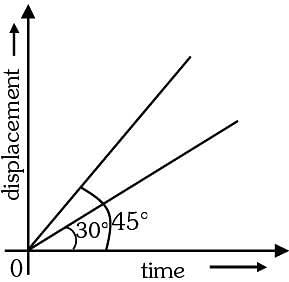
In a Young's double slit experiment, a student observes 8 fringes in a certain segment of screen when a monochromatic light of 600 nm wavelength is used. If the wavelength of light is changed to 400 nm, then the number of fringes he would observe in the same region of the screen is:
If the initial tension on a stretched string is doubled, then the ratio of the initial and final speeds of a transverse wave along the string is:
Given blow are two statements:
Statement I: Biot-Savart's law gives us the expression for the magnetic field strength of an infinitesimal current element(Idl) of a current carrying conductor only.
Statement II: Biot-Savart's law is analogous to Coulomb's inverse square law of change q, with the former being related to the field produced by a scalar source, Idl while the latter being produced by a vector source, q.
In light of above statement choose the most appropriate answer from the options given below:
As the temperature increase, the electrical resistance:
The energy that will be ideally radiated by a 100 kW transmitter in 1 hour is:
A body of mass 60 g experiences a gravitational force of 3.0 N, when placed at a particular point. The magnitude of the gravitational field intensity at that point is:
|
94 docs|192 tests
|


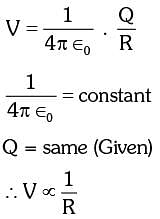
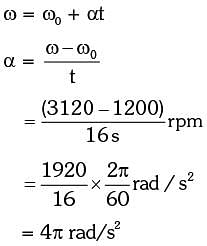

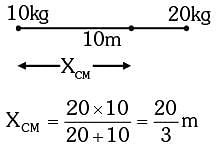
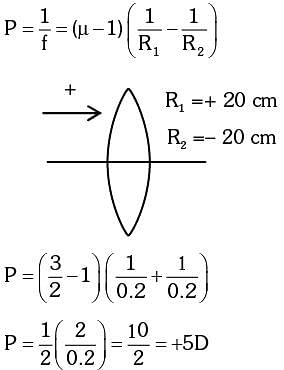
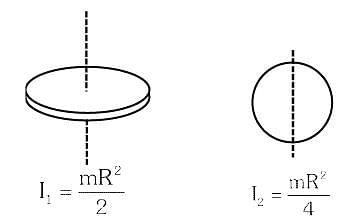
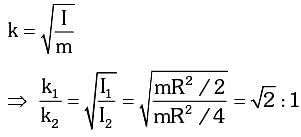

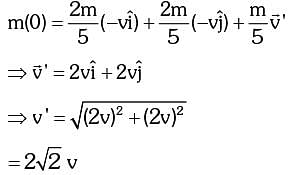

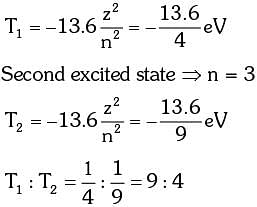
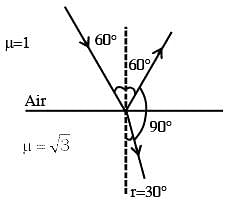
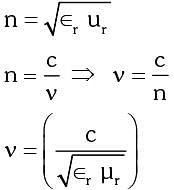
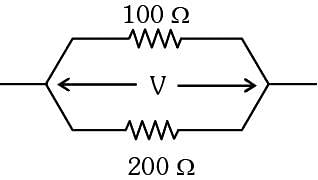
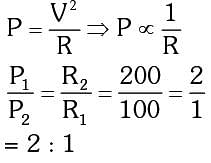
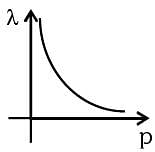
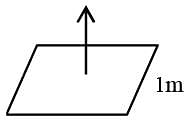
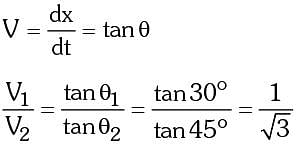
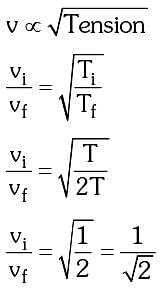
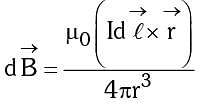
 which is a vector quantity, therefore, statement-I is correct and statement-II is wrong.
which is a vector quantity, therefore, statement-I is correct and statement-II is wrong. 

